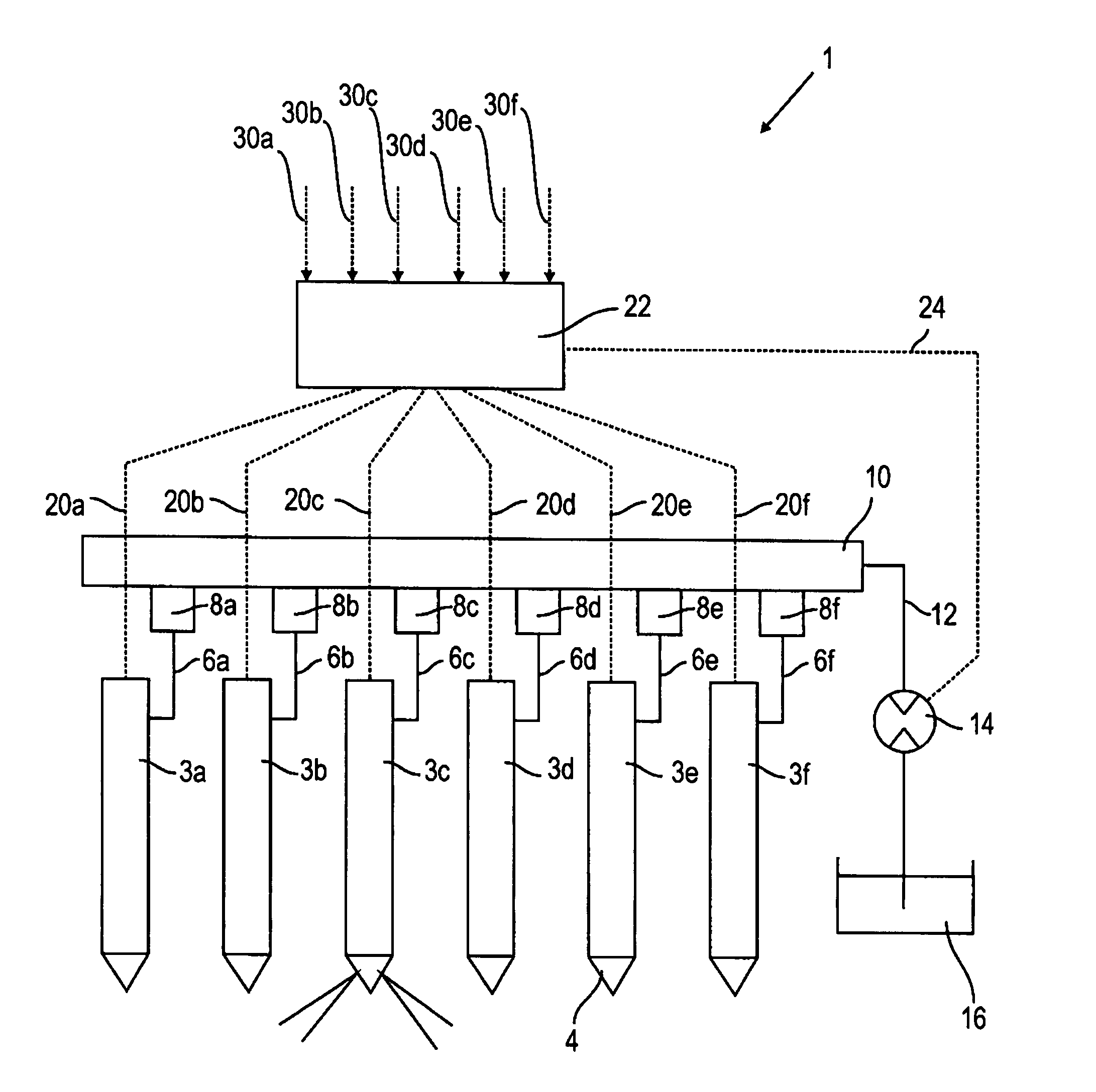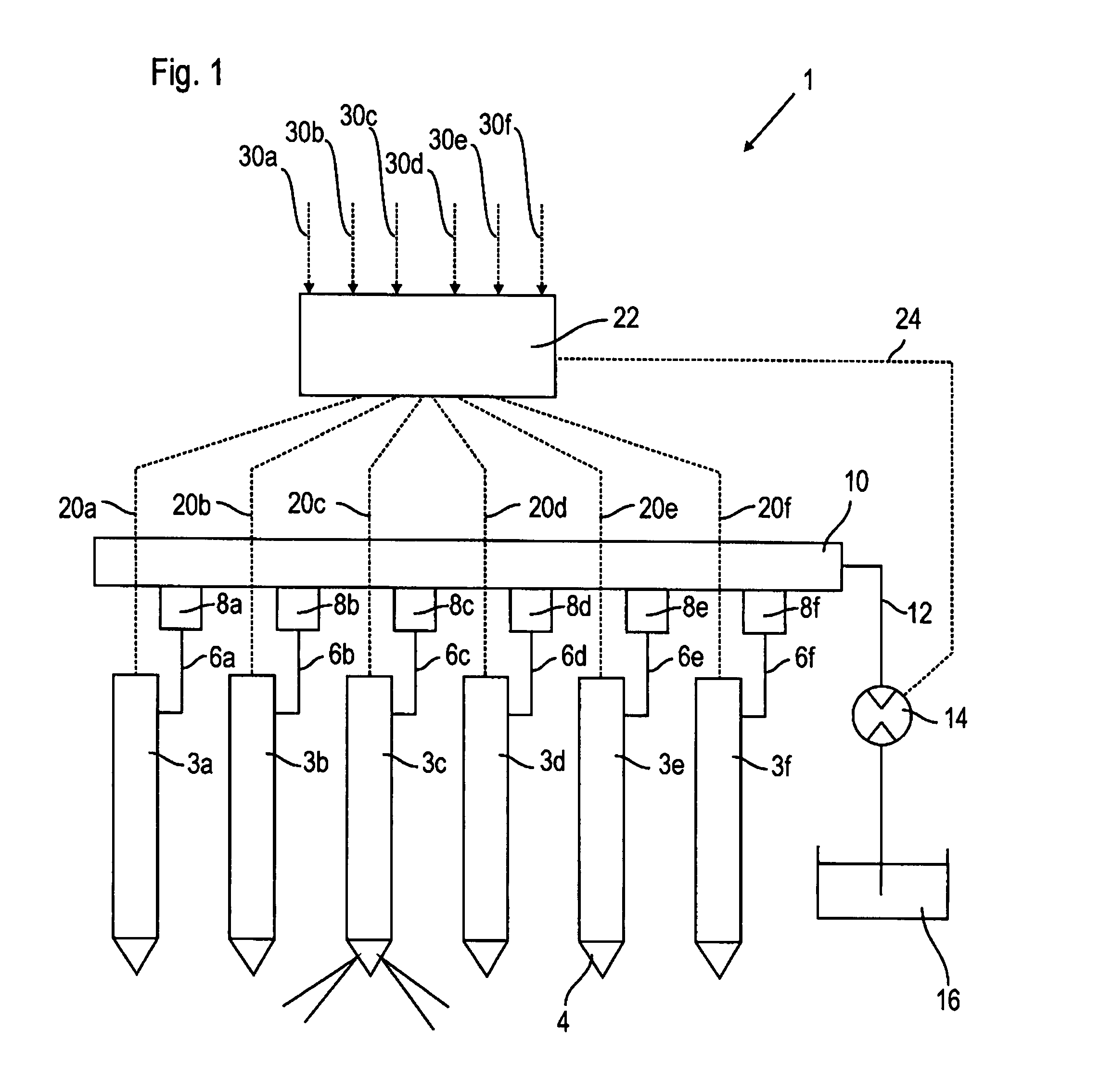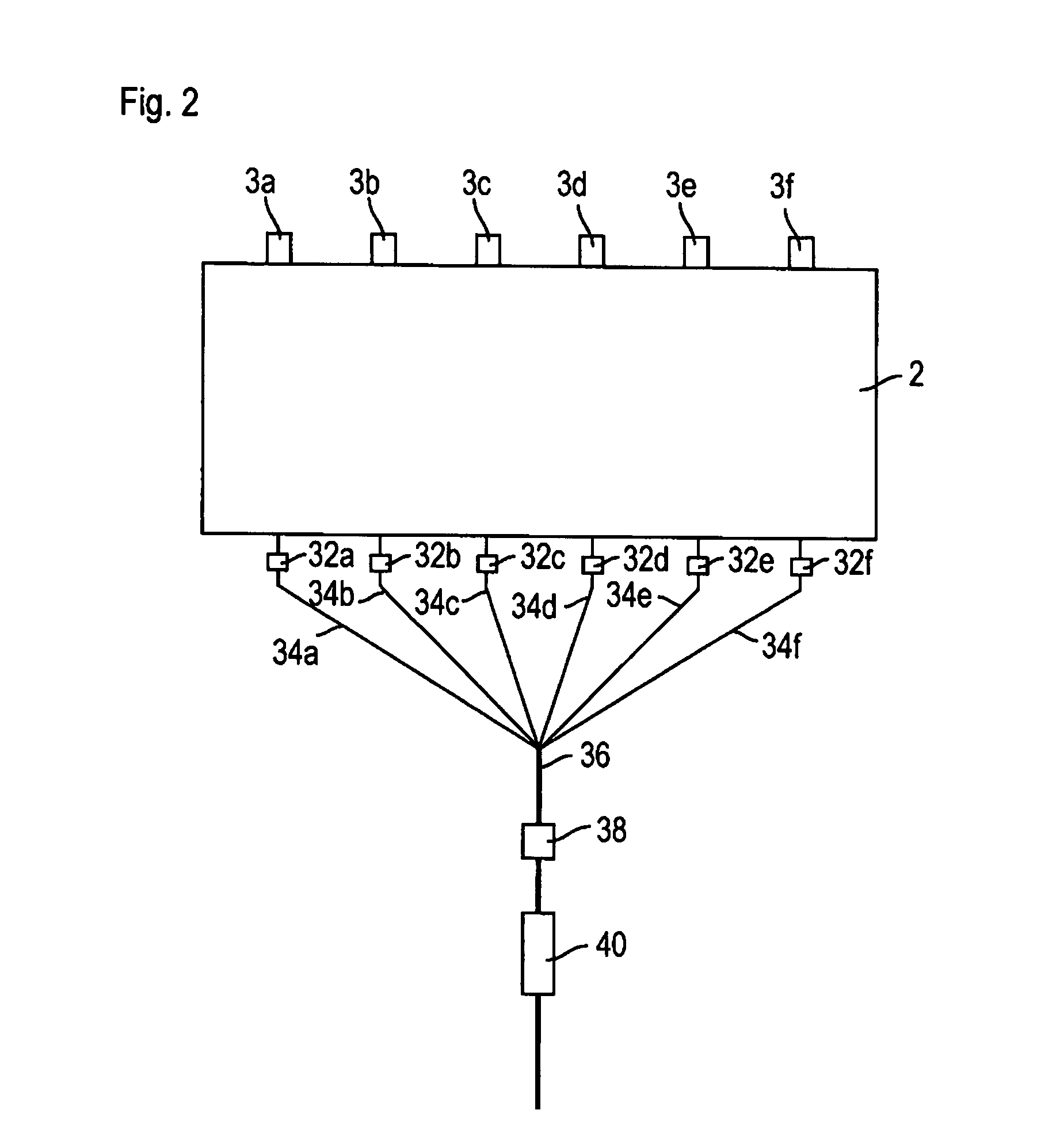Exhaust temperature based control strategy for balancing cylinder-to-cylinder fueling variation in a combustion engine
a technology of exhaust temperature and control strategy, which is applied in the direction of liquid fuel feeders low-pressure fuel injection, etc., can solve the problem of limited change to the actuation waveform of respective injectors
- Summary
- Abstract
- Description
- Claims
- Application Information
AI Technical Summary
Benefits of technology
Problems solved by technology
Method used
Image
Examples
Embodiment Construction
[0016]FIGS. 1 and 2 schematically show the structure of a control system (1) for a combustion engine (2) having multiple combustion chambers (and cylinders) (not shown). For simplification of the illustration, the combustion engine (2) is only shown schematically in FIG. 2. However, FIG. 1 shows multiple injectors (3a to 3f), an injector being assigned to each combustion chamber of the combustion engine (2). The injectors (3a to 3f each have a nozzle tip (4) pointing into the corresponding combustion chamber for injecting fuel into the combustion chamber. Although six injectors are shown in the figures, a different number of injectors (and combustion chambers) may be provided.
[0017]The injectors (3a to 3f) are respectively connected by a fuel line (6a to 6f) and a flow limiting valve (8a to 8f) to a common high pressure rail (10), generally called a common rail. The flow limiting valves have a flow rate limited quantity which is chosen for the whole performance range of the engine f...
PUM
 Login to View More
Login to View More Abstract
Description
Claims
Application Information
 Login to View More
Login to View More - R&D
- Intellectual Property
- Life Sciences
- Materials
- Tech Scout
- Unparalleled Data Quality
- Higher Quality Content
- 60% Fewer Hallucinations
Browse by: Latest US Patents, China's latest patents, Technical Efficacy Thesaurus, Application Domain, Technology Topic, Popular Technical Reports.
© 2025 PatSnap. All rights reserved.Legal|Privacy policy|Modern Slavery Act Transparency Statement|Sitemap|About US| Contact US: help@patsnap.com



